Hawaii Kayak. Great job Cyril !
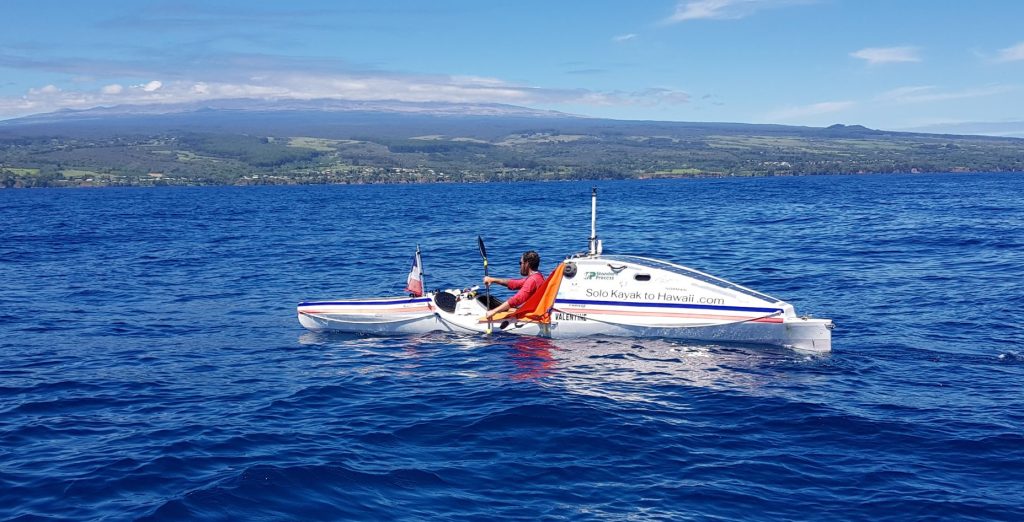
Cyril Derreumaux completed his solo two half thousand mile crossing from California – Hawaii on Sept 20th 2022 after 91 days and 9hrs at sea !
Solo Kayak to Hawaii: solokayaktohawaii.com
https://paddler.travelmap.net/
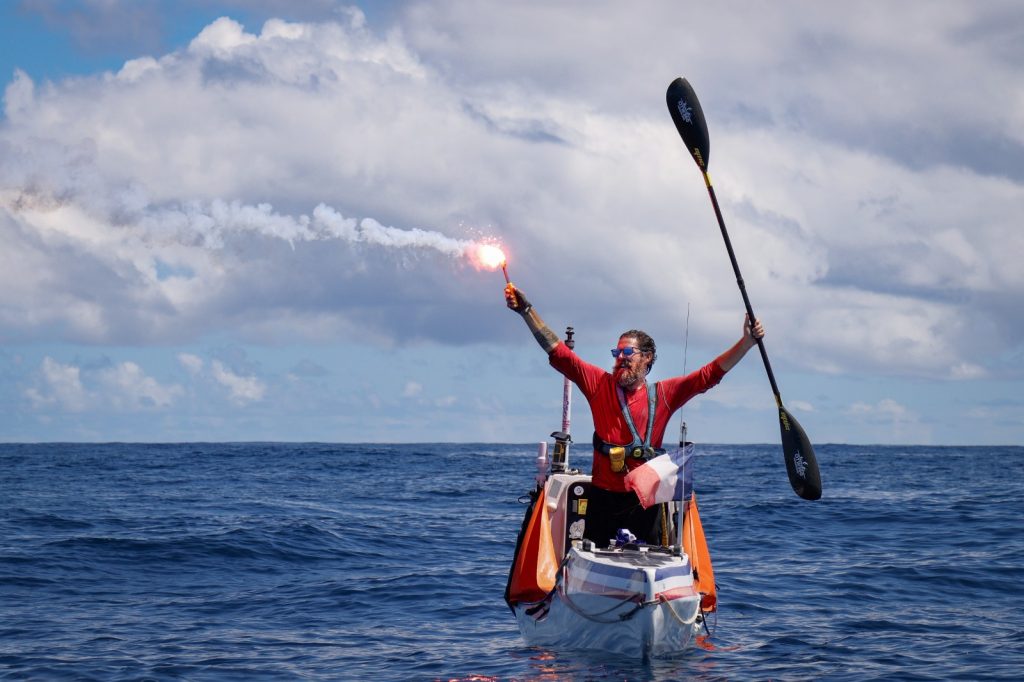
The kayak was designed by Rob Feloy and was built and fitted out by Inuk Kayaks, Totnes, Devon, UK in 2019 /20.
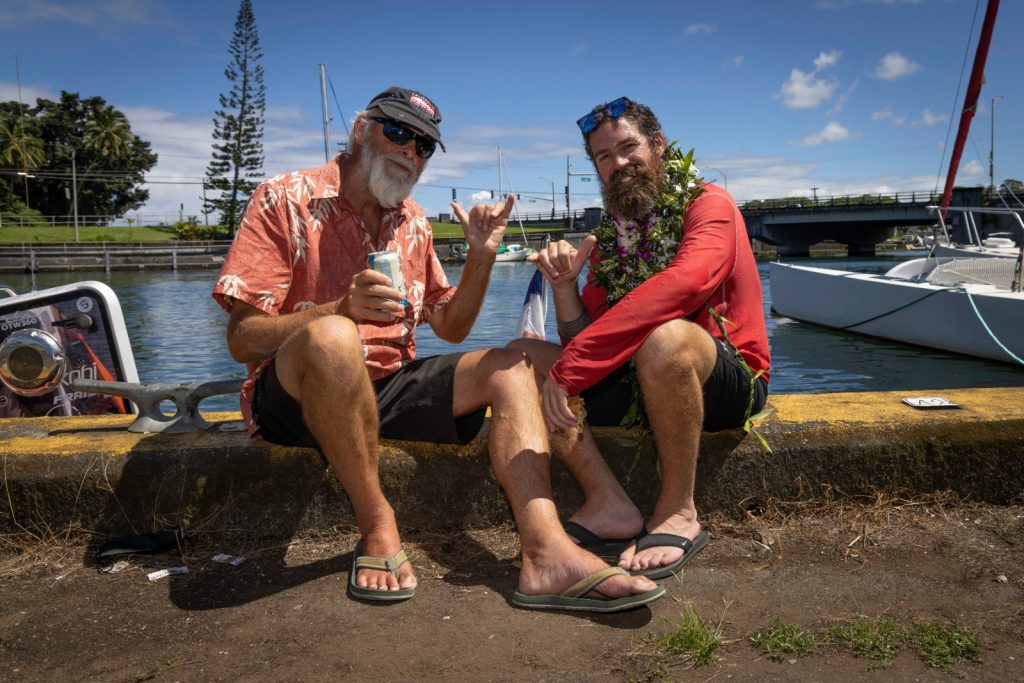
Inuk Kayaks Design & Build Team:
The designers Rob Feloy & Daniel Davy, Daniel is a Naval Architect and Rob has extensive previous experience in designing kayaks and small craft. Dan and Rob have collaborated on various previous projects from kayaks to rowing boats including the successful “Trans-Tasman” double kayak.
The build, fit out and installation of all equipment was carried out by Robs company Inuk Kayaks, working from Baltic Wharf Boatyard, Totnes.
The team was very small, Rob Feloy and “Ginge” Simon Murphy with additional specialist help Nick Hardy. Rob, “Ginge” & Nick have many years experience boatbuilding on numerous projects from kayaks to Round the World Race yachts and most things in between. Thanks to Dave from Baltic Repairs Ltd and Lee from Lee Rogers Rigging.
Inuk Kayaks have previously designed and build various long distance expedition craft including Peter Brays North Atlantic Crossing kayak, Justin & James “Trans-Tasman” double kayak, Olly Hicks “Shetland Bus” kayak and again Olly’s Greenland – Scotland Inuk Duo double kayak.
Designer testing stability.
The kayak:
The craft is a single paddler, cabin style “Ocean kayak”, aft cabin configuration it is a fully sealable self-righting survival “pod”.
Construction is light weight but very robust carbon / epoxy composite, with strength and safety paramount is design and build.
Propulsion by kayak paddles and the “Hobie” style flipper system which is foot peddled.
Steering is via either foot peddles or hand steering via twin cable system to a fixed under-stern rudder. A daggerboard is also fitted the assist in balancing the kayak in cross winds.
Cockpit is self-bailing with a conventional deck fitted for kayak paddling and a looser “skirt” deck when using the Hobie peddle system.
Apart from the cockpit and the sealed cabin the kayak is divided up into a dozen or so water-tight compartments providing storage and bouyancy. Compartments can be individually pumped out with a bilge pumping system both manually and with electric pumps.
The cabin was designed around Cyril and provides for full length sleeping and is high enough to allow Cyril to sit upright for eating / drinking and operating the navigation and communications systems. The cabin is fully sealable but also has several ventilation systems allowing air changes even in rough weather conditions.
The kayak is equipped with a full range of electronic navigation, communications and safety systems. Power is supplied by intergrated solar panels feeding twin Li batteries. Multiple back up and redundency is built in to allow for individual failures within the system.
Water is provided by both storage and water-makers, both electric and manual systems. Food is all dehydrated, pre-packed and stored within waterproof bags within the water-tight compartments.
Launch day at Totnes. Testing out the Hobie Mirage peddle system with a strong headwind up river !
Ginge peddling !
Early self-righting test with Rob in cockpit.
This is as far as we could get the kayak over !
Capsize test with Rob inside cabin.
The build:
The planning and design process took well over a year. Once we started the build and fit out only took 3 months from start to launch.
The hull plug was CNC cut in foam by Kirton Kayaks, this formed the male plug. This saved a lot of time as this produced an extremely accurate plug. This was covered in a release film and the hull was laminated over this. Using the “male plug” means it is not necessary to produce a mould which for a “one-off” build saves considerably on both time and expense.
The laminate is all carbon, a mix of woven fabric, multi-axial fabric and uni-directional carbon. We used a Sicomin Epoxy Resin system, all vacumn bagged and post cured. The laminate was in three stages, inner skin, core and outer skin, each laminate vacumn bagged. The core is a cork product that I have used on various projects, this works really well with an infused or vac bagged epoxy resin system producing a very strong and resilient light weight core. The bow, stern and join flange areas are monolithic.
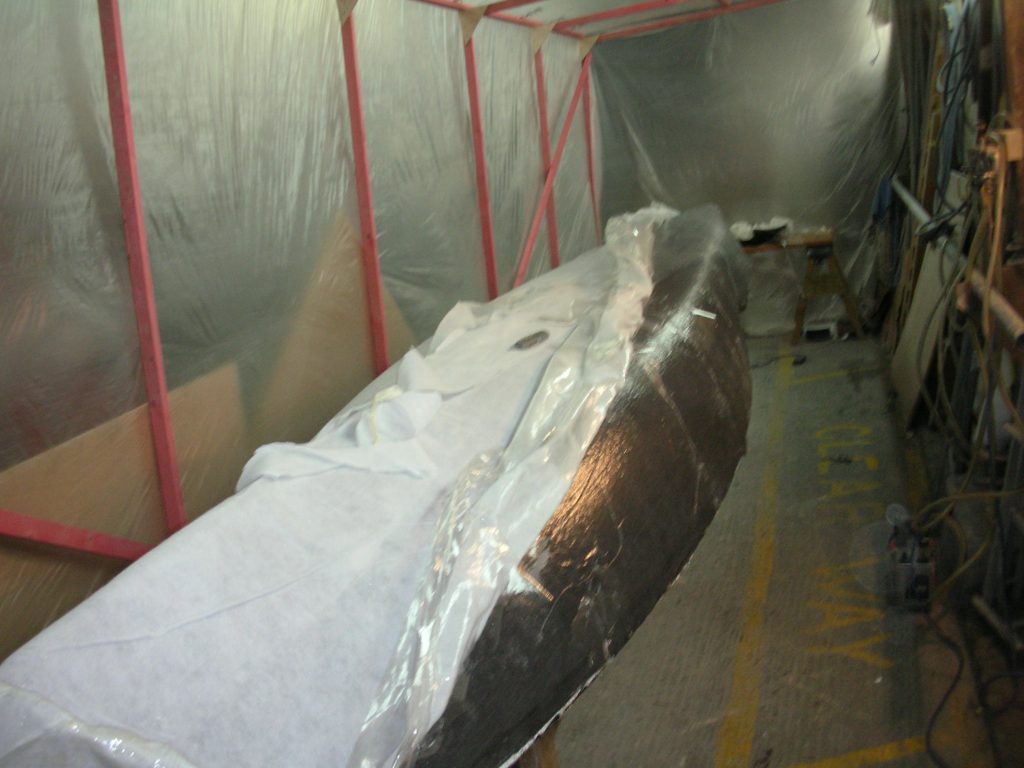
The vac bag being removed from the inner carbon laminate.
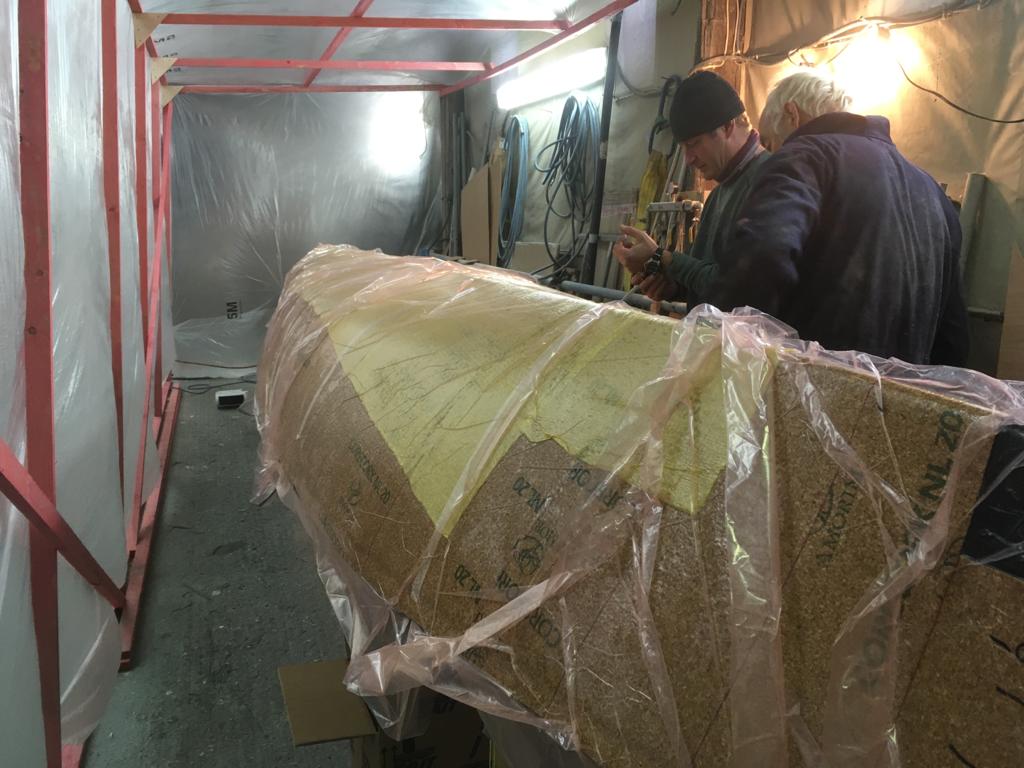
The cork core vac bagged onto inner skin.
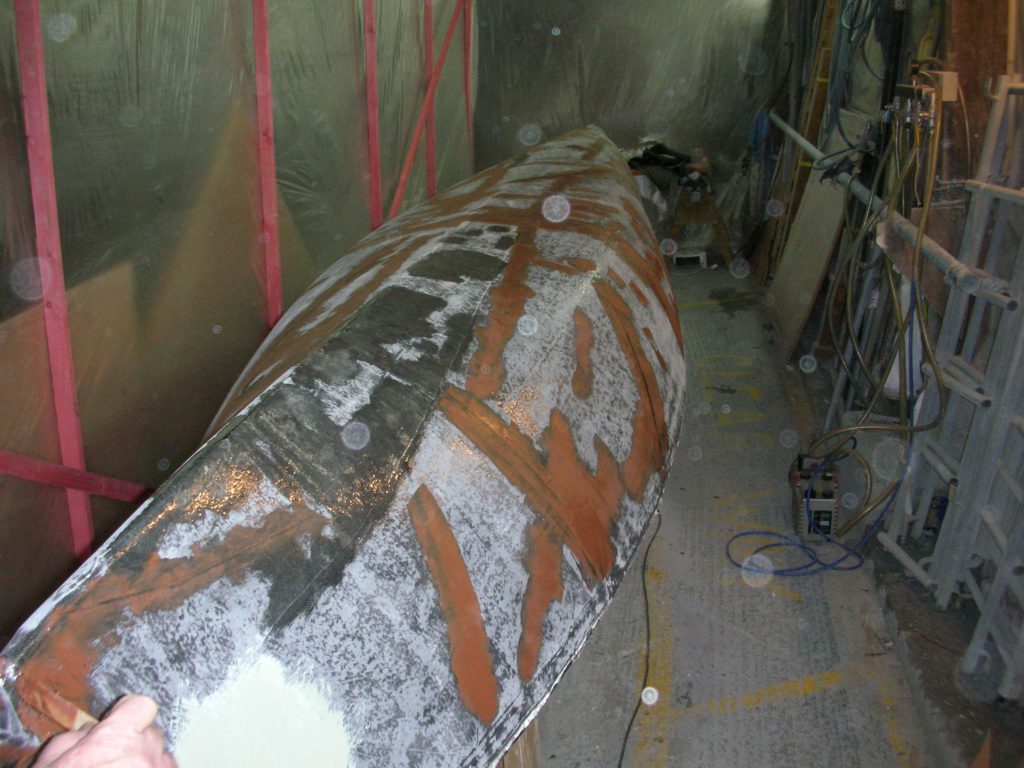
The outer carbon skin being filled and faired before painting.
Once the hull was laminated the plug was turned over and the deck and cabin plug were built up on to the hull and plug. this was constructed in cheap / simple plywood and foam, again covered with a release film.
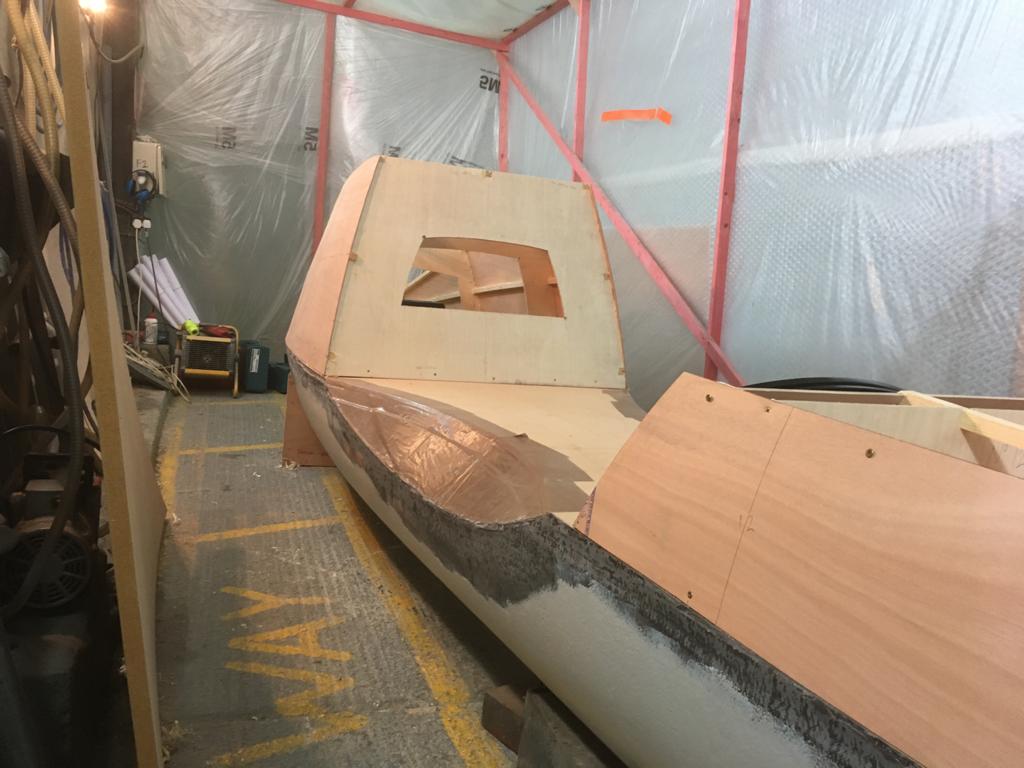
Building the deck / cabin plug onto the laminated hull.
The deck was then laminated in carbon the same as for the hull. We allowed a rebate around the gunnel area and staggered the laminates of the hull and deck in this area (for re-laminating and joining later).
We then cut the kayak in half !!! around the deck line and lifted the deck and hull mouldings off the internal plugs.
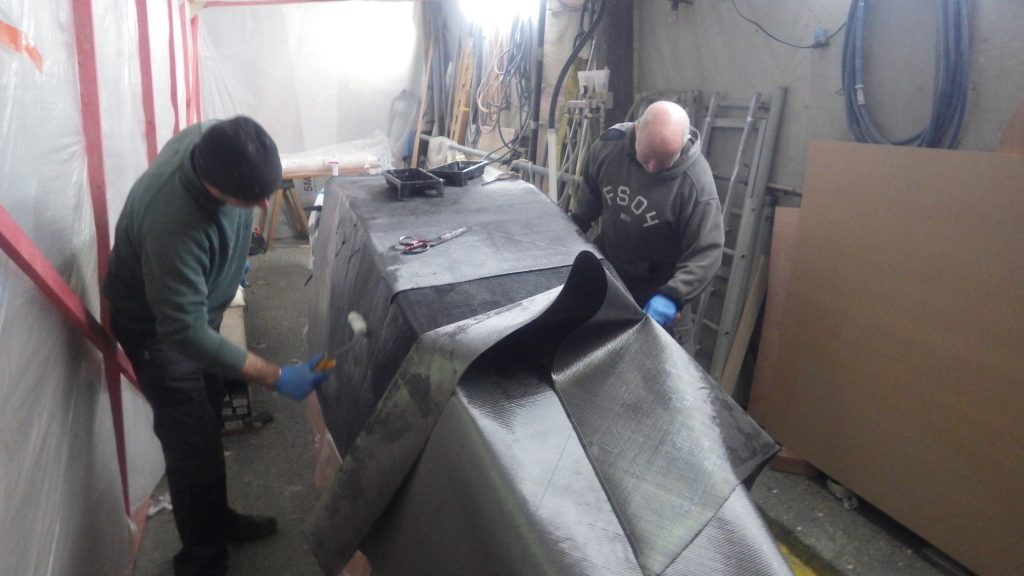
Laminating the cabin / deck.
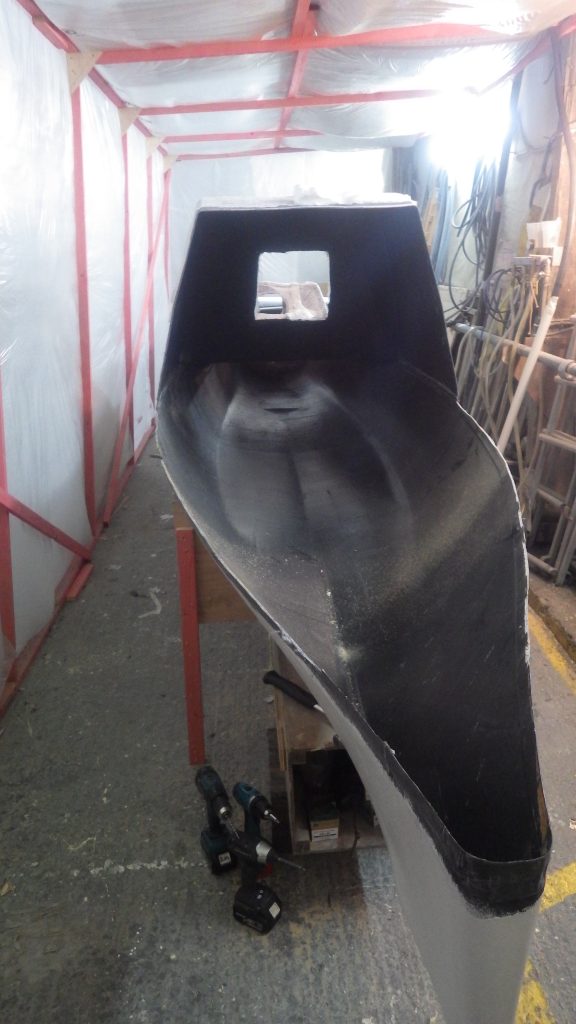
The hull with part of the cabin molding fitted before bonding in place.
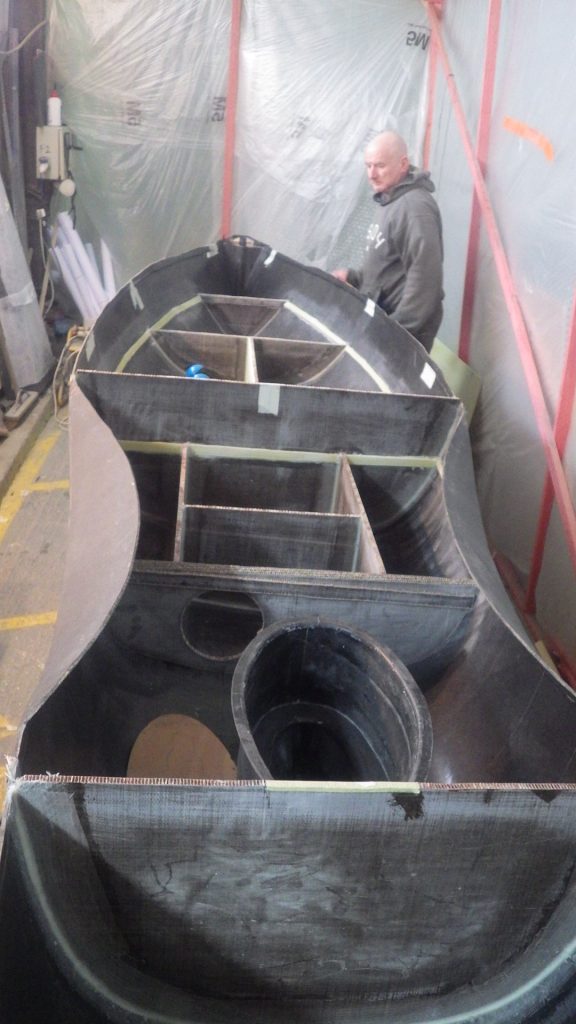
Some of the internal structure fitted prior to bonding in sub decks and deck & cabin mouldings.
When we laminated the deck / cabin we made several rebates (similar to the hull / deck rebate) so the deck moulding could be cut into three sections which would make the internal fit out a lot easier.
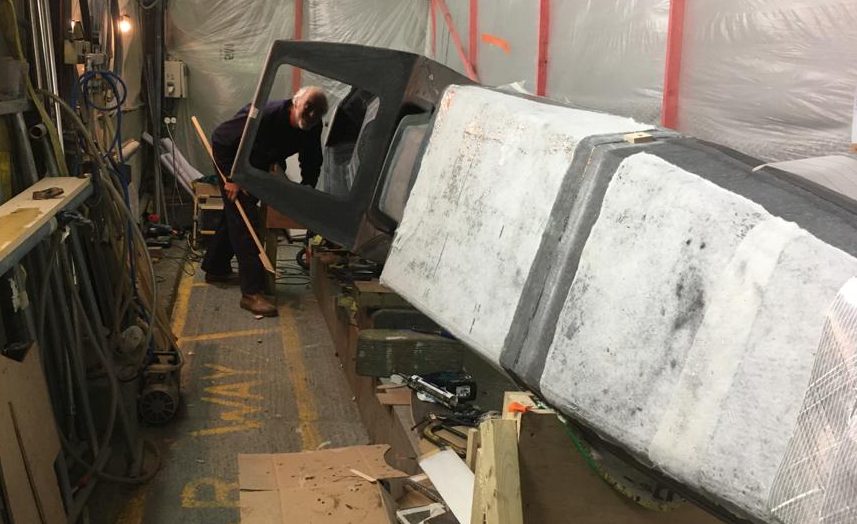
The cockpit area was designed to allow both paddling with a conventional kayak paddle. Cyril used a set of both Euro blades and Wing blade paddles. These were split shafts for storage and at a relatively standard length of 220cm. The kayak paddles pretty well determined the width of the kayak at the cockpit area, narrowing the decks down to facilitate an efficient paddling technique.
We also fitted the Hobie Mirage Drive system to the kayak, which is driven by foot peddles so the cockpit layout had also to facilitate peddling. This requires both a different seating position but also more room to allow knees and legs to move.
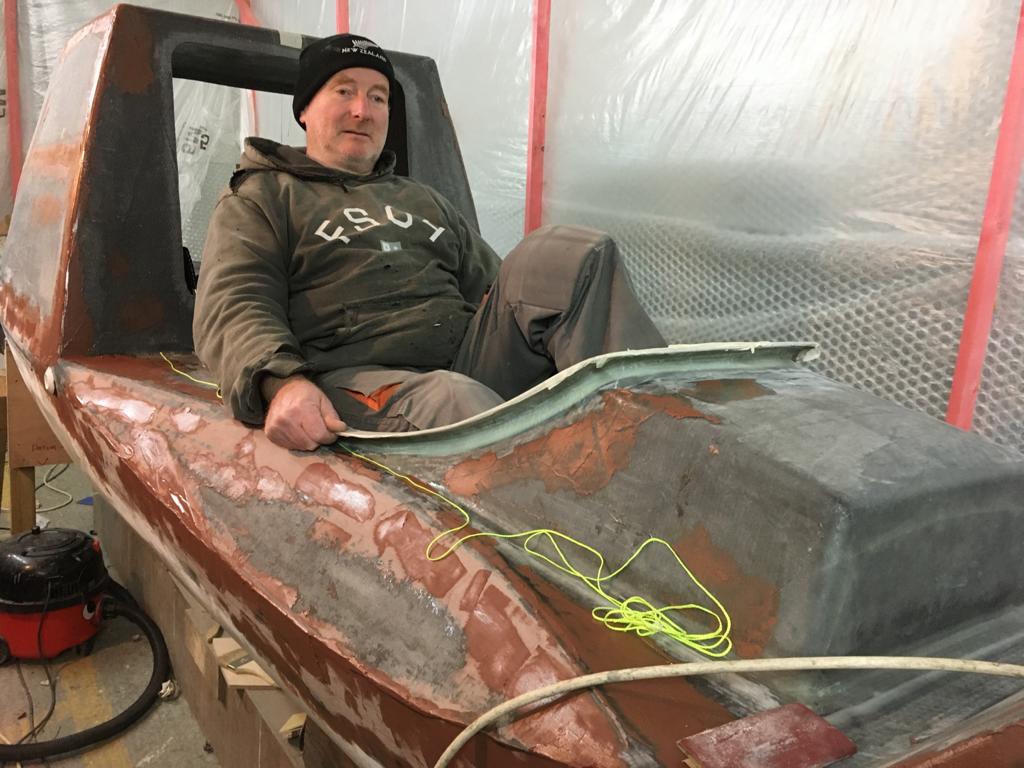
Ginge testing the Hobie system.
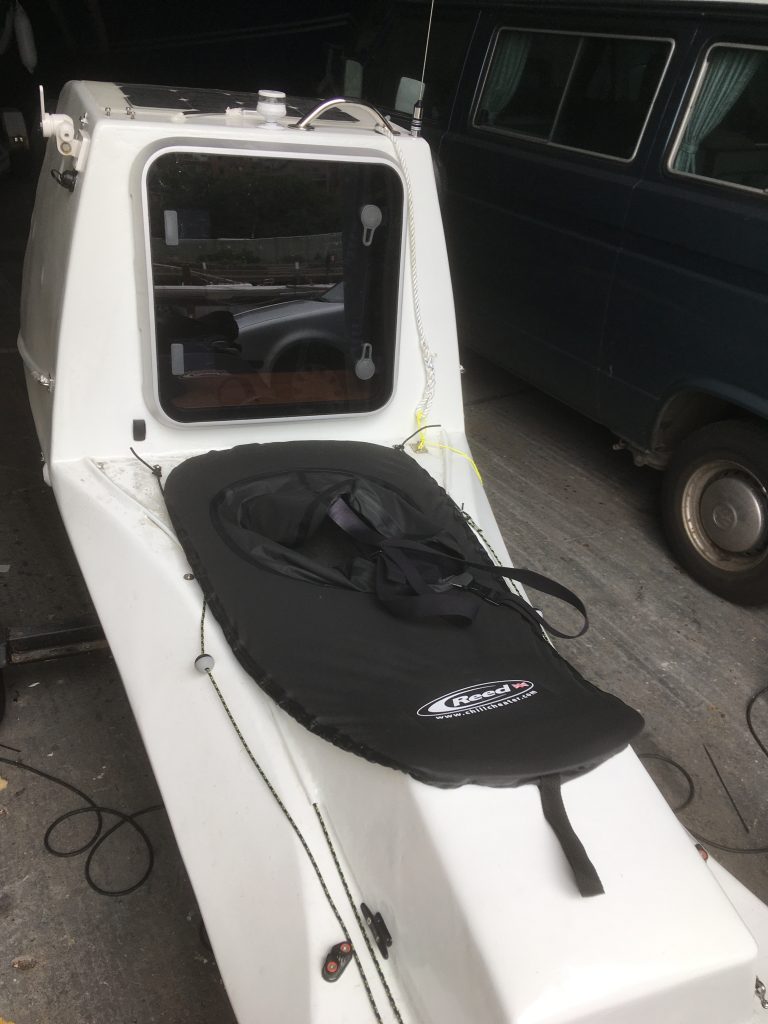
Finished cockpit.
